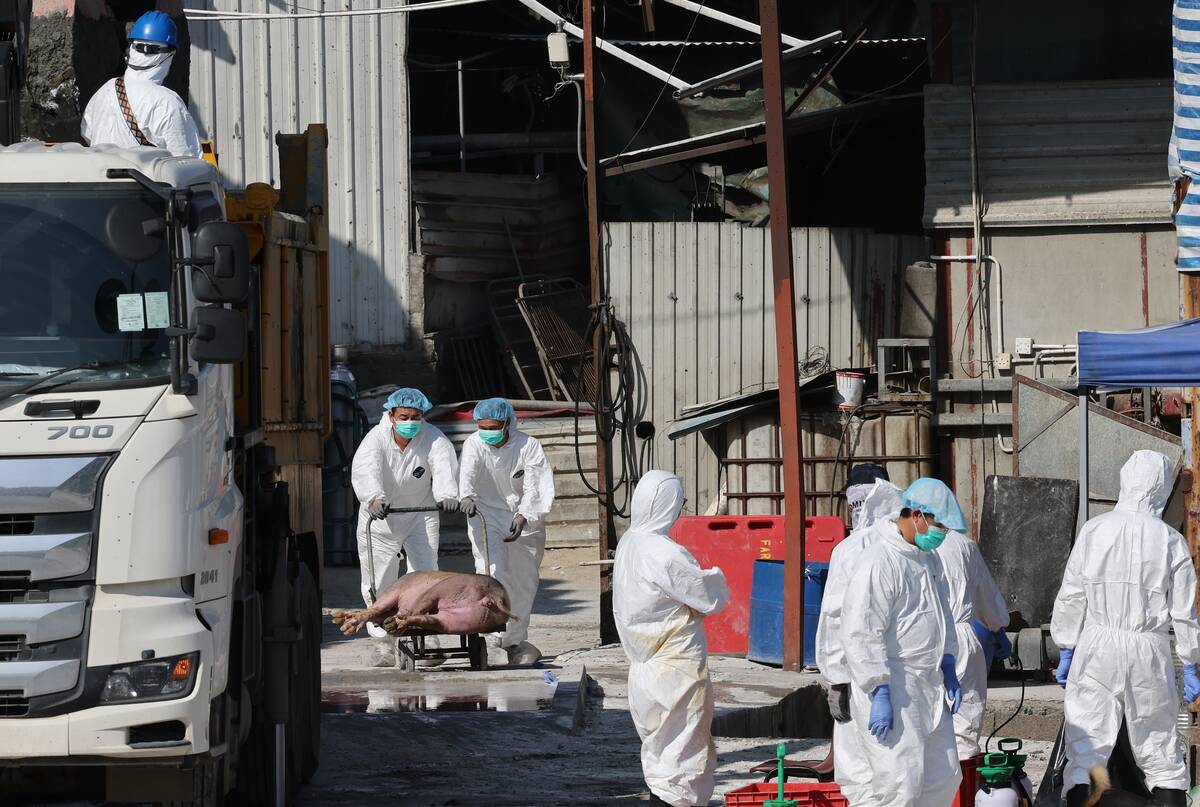CLARESHOLM, Alta. – When Andy and Ramona Hart started planning their ninth bull sale, they knew they wanted an easy going event with little stress on them or the cattle on their Claresholm ranch.
They checked out video sales and decided to sell their 50 long yearling Black Angus bulls the same way rather than sorting them and trucking them to a nearby auction market.
Over the years, they found the biggest problem was hauling bulls back after the sale for later delivery to the new owners.
Read Also

Mixed results on new African swine fever vaccine
The new African swine fever vaccine still has issues, but also gave researchers insight into how virus strain impacts protection against the deadly pig disease.
“Your pecking order is completely shot and they have been stirred up, they have run through an auction ring, they had their water changed and their feed changed,” said Hart. The 48 bulls on offer averaged $3,406.
They also offered nine bred heifers that averaged $1,610.
“Nineteen-month-old bulls like this fight long, hard and dirty and we were crippling one or two bulls every year and something had to change,” he said.
The Harts converted the calving barn into a sales arena and hired a videographer to visit the farm in January.
The result was a minute long clip of each lot showing the bull moving freely in a large open pen without noisy distractions and claustrophobia from being in a sales ring.
Each clip was shown on a large screen at one end of the barn with two ringmen and a live auctioneer.
They also provided a DVD with voiced comments on each lot for potential customers before the March 18 sale day.
“I never had to talk so long and hard on my own cattle before. That was the most difficult part of the whole process,” Hart said.
The result was a quieter, speedier sale with no crashing gates, flying sawdust and no manure handler following cattle with a scoop shovel.
That was a far cry from a long-ago sale on the farm when an overexcited bull jumped the fence and landed in the crowd.
The cattle were sorted in pens in the farmyard where they stayed in their own social group with plenty of bedding and hay nearby. Buyers could walk among the pens to see their potential purchases and the animals remained calm.
Besides providing a low stress atmosphere, the sale saved money and work for them and sales staff.
“This is Alberta in 2008 and finding people to help you push cattle through the sales ring is getting harder all the time. This doesn’t require that,” he said.
The bulls on offer were from their 2006 calf crop.
Calving for the 200 purebred cows at Willabar Ranch runs from mid August to mid October. Cows are bred from mid November to the middle of January with calves weaned in late March.
The change to fall calving started in 1995 with smaller transition groups until the entire herd was switched over in about four years. The calves are born on warm days on grass, which saves the time and labour of rescuing cold calves born in a spring snowstorm.
“It is low stress on the cattle and low stress on me. It’s a relaxing way to calve cows,” he said.















